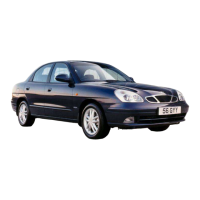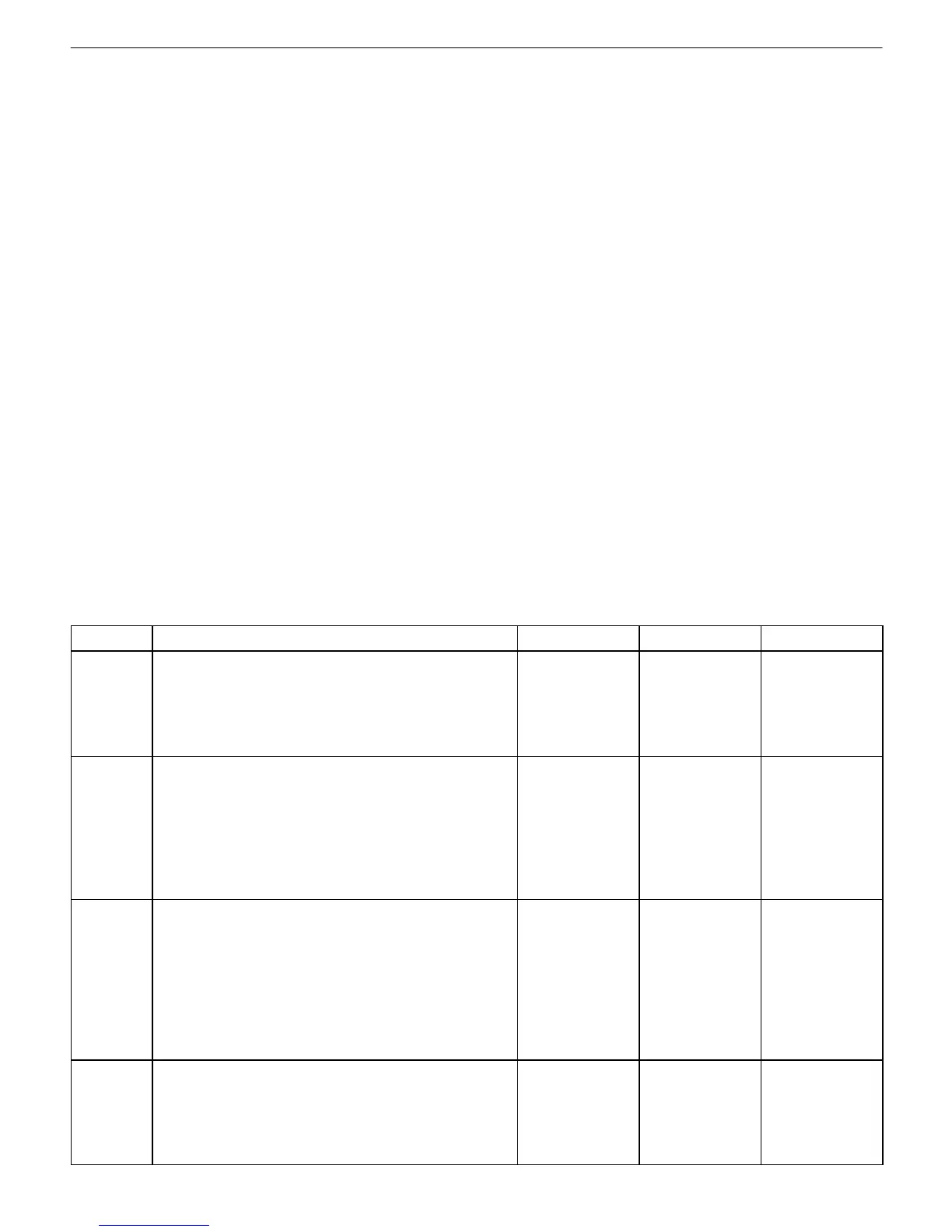ENGINE CONTROLS 1F – 49
DAEWOO V–121 BL4
FUEL SYSTEM DIAGNOSIS
Circuit Description
The fuel pump is an in–tank fuel pump mounted to a fuel
sender assembly. The fuel pump will remain on as long as
the engine is cranking or running and the powertrain con-
trol module (PCM)/engine control module (ECM) is receiv-
ing reference pulses from the crankshaft position (CKP)
sensor. If there are no reference pulses, the PCM/ECM
will turn off the fuel pump 2 seconds after the ignition
switch is turned ON or 2 seconds after the engine stops
running. The fuel pump delivers fuel to the fuel rail and the
fuel injectors, where the fuel system pressure is controlled
from 284 to 325 kPa (41 to 47 psi) by the fuel pressure reg-
ulator. The excess fuel is returned to the fuel tank.
Test Description
The number(s) below refer to step(s) on the diagnostic
table.
2. When the engine is idling, the intake manifold vacu-
um is high. This vacuum is applied to the fuel pres-
sure regulator diaphragm, offsetting the spring
pressure inside the fuel pressure regulator and low-
ering the fuel pressure.
10. If there is fuel bleeding back through the fuel return
outlet, this is due to a faulty fuel pressure regulator.
14. Another symptom often present when the fuel injec-
tors are leaking is hard starting. Leaking fuel injec-
tors can cause a flooding condition.
23. Fuel leaking from the fuel pump inlet is due to a
faulty one–way check valve in the fuel pump.
CAUTION : The fuel system is under pressure. To
avoid fuel spillage and the risk of personal injury or
fire, it is necessary to relieve the fuel system pressure
before disconnecting the fuel lines.
CAUTION : Do not pinch or restrict nylon fuel lines to
avoid damage that could cause a fuel leak, resulting
in possible fire or personal injury.
Fuel Pressure Relief Procedure
1. Remove the fuel cap.
2. Remove the fuel pump fuse EF18 from the engine
fuse box.
3. Start the engine and allow the engine to stall.
4. Crank the engine for an additional 10 seconds.
Fuel System Diagnosis
Step Action Value(s) Yes No
1
1. Relieve the fuel system pressure.
2. Install a fuel pressure gauge.
3. Turn the ignition ON.
Is the fuel pressure within the values specified and
holding steady?
284–325 kPa
(41–47 psi)
Go to Step 2 Go to Step 5
2
1. Disconnect the fuel pressure regulator vacuum
hose.
2. Start the engine.
3. Allow the engine to idle.
4. Connect the fuel pressure regulator vacuum
hose.
Does the fuel pressure decrease?
System OK Go to Step 3
3
1. Allow the engine to idle.
2. Disconnect the vacuum hose from the fuel
pressure regulator.
3. Connect a vacuum pump with a gauge to the
fuel pressure regulator vacuum port.
4. Apply 41–47 kPa (12–14 in. Hg) of vacuum to
the fuel pressure regulator.
Does the fuel pressure decrease?
Go to Step 4 Go to Step 16
4
1. Locate and correct the cause of the vacuum
restriction to the fuel pressure regulator.
2. Confirm the operation of the fuel pressure reg-
ulator.
Is the repair complete?
System OK

